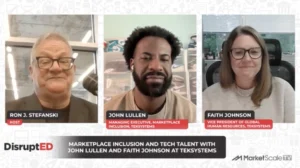Smart Buildings Pose New Possibilities, New Risks
Everyday, thousands if not millions of workers swipe into their place of work with a personalized ID badge. The lights and heat in the lobby come on shortly before people started arriving for the day. Workers swipe their badges for the elevator to access specific floors. As employees enter their office and the lights come on, the system learns when people typically get there.
The shades are up to let in the morning light, but they will automatically come down when the afternoon sun makes reading a computer monitor impossible. Every move has been monitored since someone entered the building, ensuring the safety of everyone in the building, so the environment is comfortable when someone arrives anyplace.
This is modern life in a smart building.
Smart buildings are becoming increasingly popular. Automated processes and the Internet of Things (IoT) are being utilized in office buildings, factories, and other places of work, powering all of this.
It is projected that by 2021 there will be 64 million smart building units worldwide. That means much more efficiency, greener workplaces, and nodes ready to fulfill the promise of creating smart cities that will become increasingly connected with their populations.
Although smart buildings certainly reduce the likelihood of physical threats onsite, such a high degree of connectivity increases the likelihood of cyberattack.
Building security will now have to include building cybersecurity as well. Otherwise, tenants can end up locked out of their offices, or even the entire building. People stuck in elevators, or temperature controls being taken down may not seem like an existential crisis, but it is a possible threat that comes with IoT technology. The last may simply make people a little too hot or too cold, but the others can present actual dangers to people and potentially valuable data.
There are plenty of advantages to making an investment in IoT for building managers, including money saved over the long term, happier tenants, and more environmentally conscious structure. However, it is important to remember that with every advantage there is potential for a new threat or risk to present itself. As more buildings and offices move toward this technology, and cybersecurity becomes more impenetrable, the benefits of having a wholly connected and automated environment will begin to become obvious.








